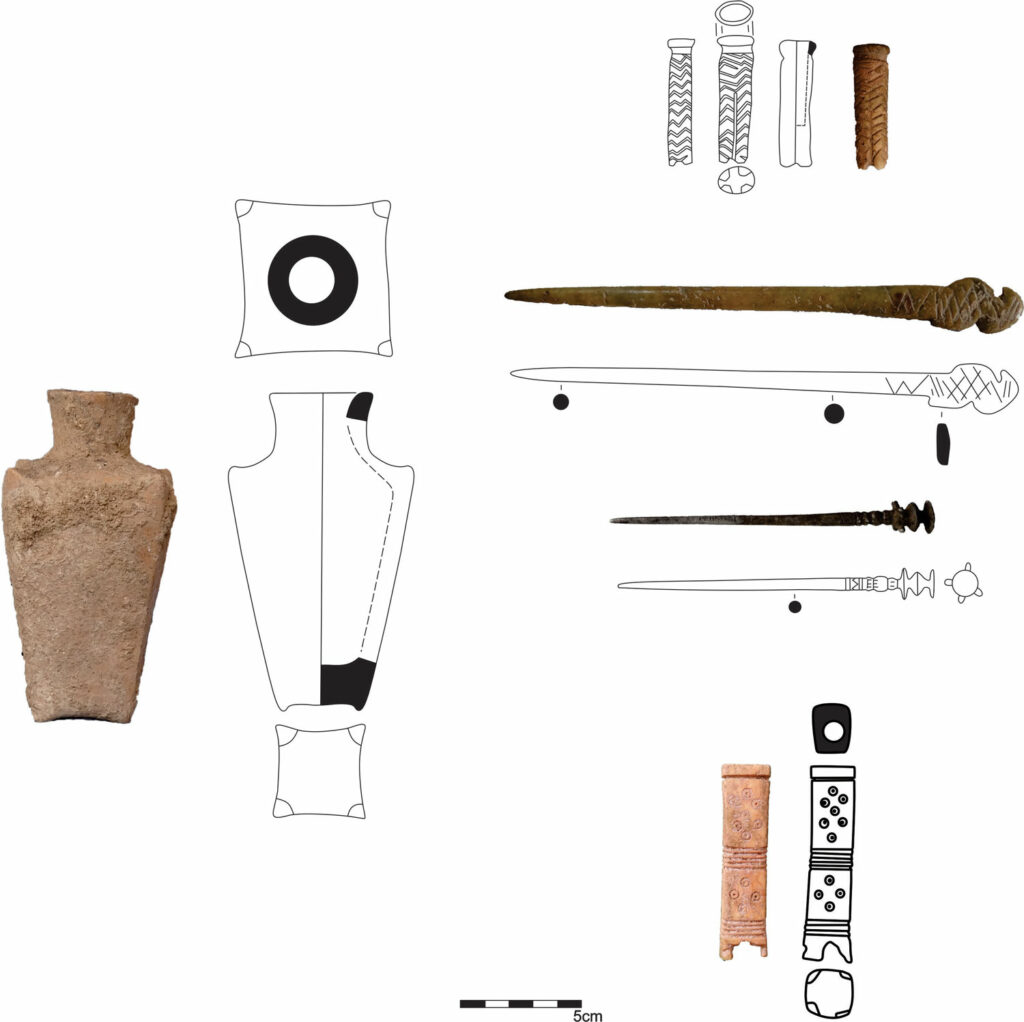2,700-Year-Old Eye Makeup Formula Analyzed
- archaeology.org language
- 2025-06-17 00:30 event
- 4 months ago schedule


Domain FALEARN.com for sale! This premium domain is available now at Kadomain.com

Archaeologists have discovered a Viking Era burial ground at Lisbjerg, four miles north of Aarhus, Denmark. The graves date to the 10th century and so far they are all pagan. The burials vary in size and funerary furnishings, suggesting people of diverse social status were buried there. Several of the graves feature lavish grave goods … Read the full post →"Viking burial with spectacular casket found in Denmark"
CRNO JEZERO CAVE, CROATIA—The Dubrovnik Times reports that an archaeological team from the Dubrovnik Museums […] The post 4,000 Years of Human History Uncovered in Croatian Cave appeared first on Archaeology Magazine. News, cave, Crno Jezero, Croatia, Illyrian
MONTFOORT, THE NETHERLANDS—Workers recovered a remarkable medieval sword during dredging of the Korte Linschoten River […] The post Remarkable Medieval Sword Pulled from Dutch River appeared first on Archaeology Magazine. News, endless knot, Linschoten, medieval europe, montfoort, Netherlands, sun wheel, sword
ITHACA, GREECE—In Homer’s epic poems the Iliad and the Odyssey, the Greek hero Odysseus hails […] The post Sanctuary Associated with Worship of Trojan War Hero Identified on Greek Island appeared first on Archaeology Magazine. News, Greece, hero worship, Ithaca, Mycenaean, Odysseus, School of Homer
Cleopatra of Macedon (355/4-308 BCE), daughter of Philip II of Macedon (reign 359-336 BCE) and his Molossian queen, Olympias of Epirus (c. 375-316 BCE), was the only full sister of Alexander the Great (reign 336-323 BCE). Born in Pella, the capital of the ancient kingdom of Macedonia, Cleopatra grew up as a royal princess in the Argead court. She later became the queen of Epirus through her marriage...
An excavation at the site of a new industrial park in Vaihingen, southern Germany, has discovered nine prehistoric graves, settlement remains and hundreds of artifacts. The new discoveries range in date to as back as far as 5,000 B.C. through the Iron Age (ca. 800-450 B.C.). The first historical reference to Vaihingen dates to the … Read the full post →"Remains from Neolithic to Iron Age found in southern Germany"
‘Strike’ by Sarah E. Bond review JamesHoare Tue, 06/17/2025 - 08:00
Did Germany Read Mein Kampf? JamesHoare Tue, 06/17/2025 - 07:00
SAINT-TROPEZ, FRANCE—During recent exercises by the French navy aimed at monitoring the country's underwater resources, […] The post Marine Archaeologists Locate Deepest Shipwreck Recorded in French Waters appeared first on Archaeology Magazine. News, Camarat, France, Liguria, Saint-Tropez, shipwreck
KANI KOTER, IRAN—Chemical analysis of the contents of a small ceramic vessel found in a […] The post 2,700-Year-Old Eye Makeup Formula Analyzed appeared first on Archaeology Magazine. News, cosmetics, graphite, Iran, Iron Age, Kani Koter, kohl
NORTHUMBERLAND, ENGLAND—According to a report by Live Science, archaeologists working at the Roman fort of […] The post Roman Soldier's Shoe Buried at English Fort appeared first on Archaeology Magazine. News, England, Magna, Roman army, shoe, Vindolanda
The Battle of New Orleans (8 January 1815) was the final major battle of the War of 1812, in which a ragtag American army under Major General Andrew Jackson (1767-1845) beat back a superior British force under Major General Sir Edward Pakenham (1778-1815). The battle was incredibly lopsided the Americans suffered 71 casualties while the British suffered over 2,000 and was fought after the peace...
The Treaty of Brest-Litovsk, signed on 3 March 1918, outlined the harsh conditions under which the crumbling Russian Empire withdrew from the First World War (1914-18). Negotiated by Vladimir Lenin (1870-1924), the leader of Soviet Russia after the Russian Revolution of 1917, and the German Kaiser Wilhelm II (reign 1888-1918) and his Central Powers allies, the treaty stripped away most of the non-Russian...
On the Spot: Imaobong Umoren JamesHoare Mon, 06/16/2025 - 08:00
More than 50 helmets from both World Wars have been discovered only feet away from the Institute of Archaeology of the University of Wrocław. Most of them are German M35 and M42 models manufactured before and during World War II, but there are also some M16 models from World War I, two M38 Luftschutz helmets … Read the full post →"50 helmets from WWI, WWII found in Wrocław"
Europe and the End of Old Java JamesHoare Mon, 06/16/2025 - 06:00
An early 11th century sword with rare decoration surviving in excellent condition discovered in Montfoort, the Netherlands, has entered the permanent collection of the Rijksmuseum van Oudheden in Leiden. The Linschoten Sword is 1 meter (3.3 feet) long, with a broad crossguard 17 cm (6.7 inches) wide and weighs 840 grams (1.85 lbs). It is … Read the full post →"11th c. sword with rare blade inlays found in the Netherlands"
An X-ray examination of a gilt bronze spear sheath from the Kofun period (300-538 A.D.) of the Yamato kingship in Japan has found that the iron spear inside was inlaid with gold in an intricate pattern. It is the first spear discovered in East Asia with inlaid decoration. The artifact was discovered under a boulder … Read the full post →"Intricate gold inlay found on ritual spear"
DUBLIN, IRELAND—A recent investigation by University College Dublin archaeologist Conor Trainor posits that ceramic beehives […] The post Did Cretan Winemakers Scam Their Roman Customers? appeared first on Archaeology Magazine. News, beehives, Crete, honey, Rome, winemaking